Many learners gain limited experience of driving on country roads during their lessons. Even if you live in the country, your driving examiner will probably spend a lot of the time with you in the nearest city, where practical test routes are more prevalent.
But country driving poses some particular challenges, from a greater chance of animals in the road, to passing other vehicles with very narrow margins. There are good—and not so good—ways to tackle rural routes. We’ve compiled the best tips for keeping you safe.
National speed limit
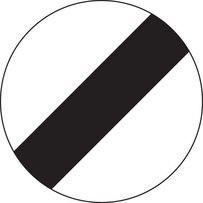
All content is used as under the Open Government Licence v3.0
There are far fewer speed restriction signs along country roads than if you’re driving in the city. When you’re trundling through villages, of course, you’ll probably be told to stick to 30mph or below. But once out into the depths of the countryside, where there are no indications to the contrary—such as regular street lights or road signs—chances are the national speed limit will apply. On single carriageway roads (ie. where there’s no central reservation separating traffic travelling in opposite directions), that’s 60mph. Quite fast, when you consider how narrow the lanes can be, the likely lack of road markings and signs, and the twisty-turny nature of many country roads.
Here’s the thing, though: the speed limit is a limit, not a target. In clear conditions, on some stretches of the road, you might well hit such dizzying speeds. But other points along your journeys will warrant a much more measured approach. As the Highway Code says:
“Adapt your driving to the appropriate type and condition of road you are on.”
Make sure you slow down in good time for bends, and be alert to the possibility of happening upon wildlife, pedestrians or slow moving vehicles.
Lack of lighting

It’s often much darker in the countryside than the city, due to less light pollution. That’s why it’s a good place to stargaze—but also why it’s important to make sure you use your car lights effectively, so you can see and be seen.
Normal dipped headlights are okay, and should provide you with a decent view of the lane in front. But if you’re alone on the roads, switching on your full beams will give you optimal vision further ahead. They can help you pick out the upcoming contours of the route, giving you more time to plan ahead of bends.
Just make sure to dip your headlights again (turn the full beam off) as soon as you see another road user approaching or if you come across a stretch of road with street lighting. And if there’s fog or snow, it’s best to stick to dipped headlights (or fog lights if your vision is really compromised): you’ll get glare if you try hitting the full beams, which will only make your vision worse.
Animals in the road
Horses
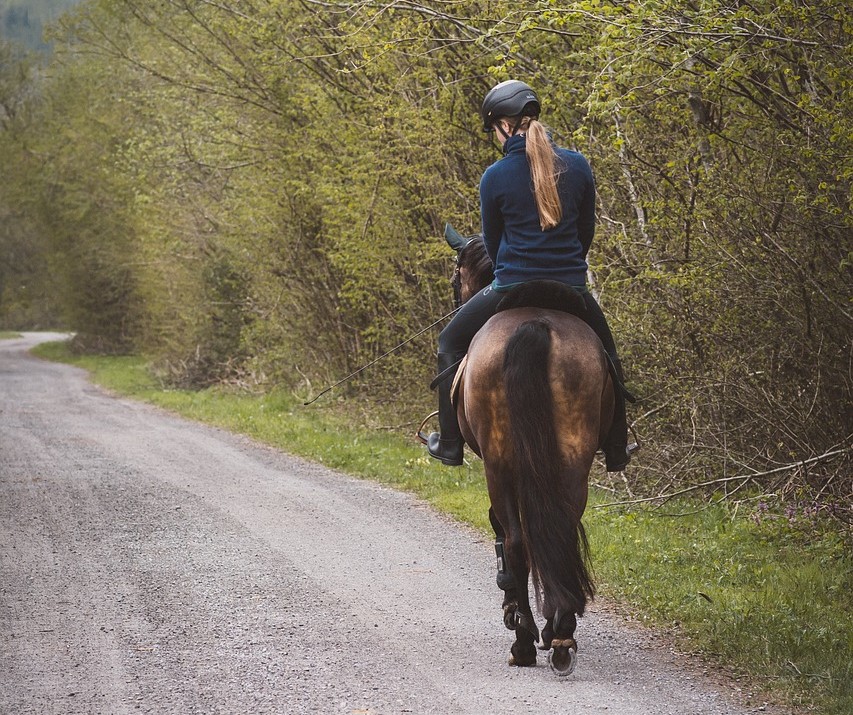
City drivers might come across the odd four-legged beast on their travels. But in the countryside, there’s a high chance you’ll encounter a horse at some point or other. And whether it’s a wild horse, or is being led, ridden, or driven (ie. is pulling a cart), you need to know how to approach, pass and move away from it safely.
Horses are skittish animals, and their size, speed and strength makes them fairly dangerous when frightened. As a driver, you are responsible for slowing down—and we mean really crawling—as you approach and pass them. Rule 215 of the Highway Code is dedicated to driving near horses, and offers these key rules:
– Slow down to a maximum of 10 mph when you spot a horse ahead
– Never beep your horn or rev your engine, as this is likely to scare the animal
– When it’s safe to do so, pass very slowly, allowing at least a two metre gap
– Accelerate slowly after passing the animal
And a few things to remember:
– Horses may be walking two abreast,
– Horses are often ridden by children
– Horses are likely to bolt if spooked
– Horse riders may use hand gestures to communicate with you
Livestock and other large animals
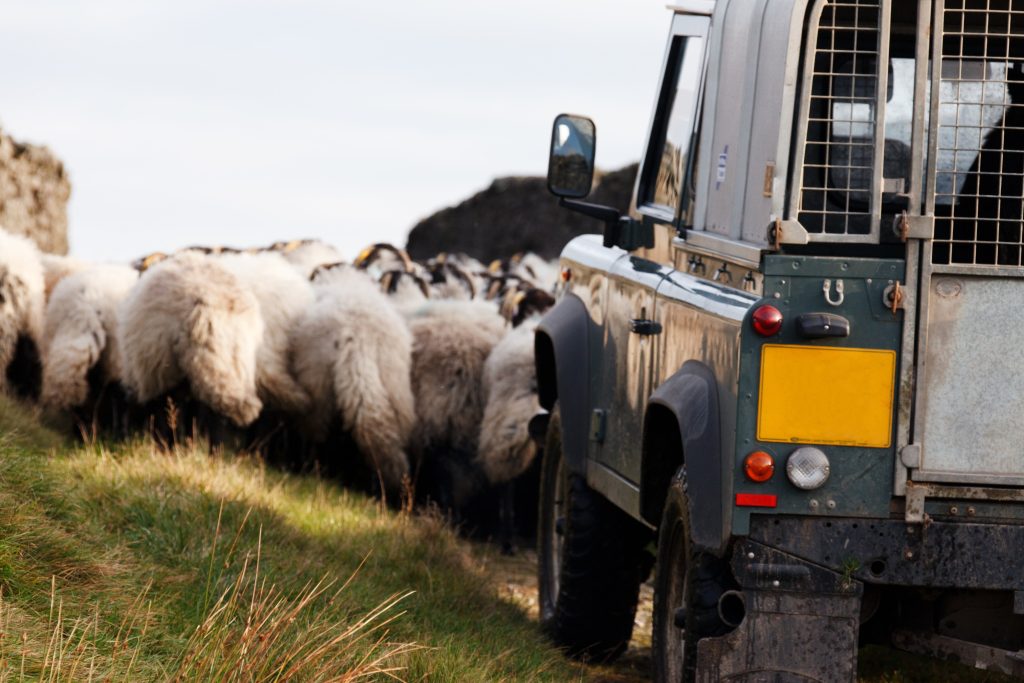
It isn’t just horses you might happen upon on rural roads; you might also come across an occasional herd of cattle, flock of sheep, or unfenced (or escapee) farm animals.
Rule 214 of the Highway Code says:
“If a road is blocked by a herd of animals, stop and switch off your engine until they have left the road.”
Otherwise, drop your speed and scan the road and roadsides for signs of movement, particularly where there are road signs indicating animals in the road.
Many large animals, like deer, can be very unpredictable. They also have the capacity to seriously damage your car if you hit them. If you see a deer, dip your full beams, so the animal is less likely to become confused and freeze (deer in the headlights is a real thing!). Slow right down, and if necessary, come to a stop, using your hazard lights to warn other drivers what you’re doing. But avoid careering off to one side, as this can land you in greater danger.
Small animals
Other creatures, from cats to pheasants to hedgehogs, may also share your country route. Animals tend not to be the most obliging road companions, and might change directions very swiftly. Again, avoid swerving, which can be the instinctive reaction, as you might end up off the road or into the path of oncoming traffic. If you need to brake, first check that other vehicles aren’t travelling too closely behind you.
Farm vehicles and overtaking
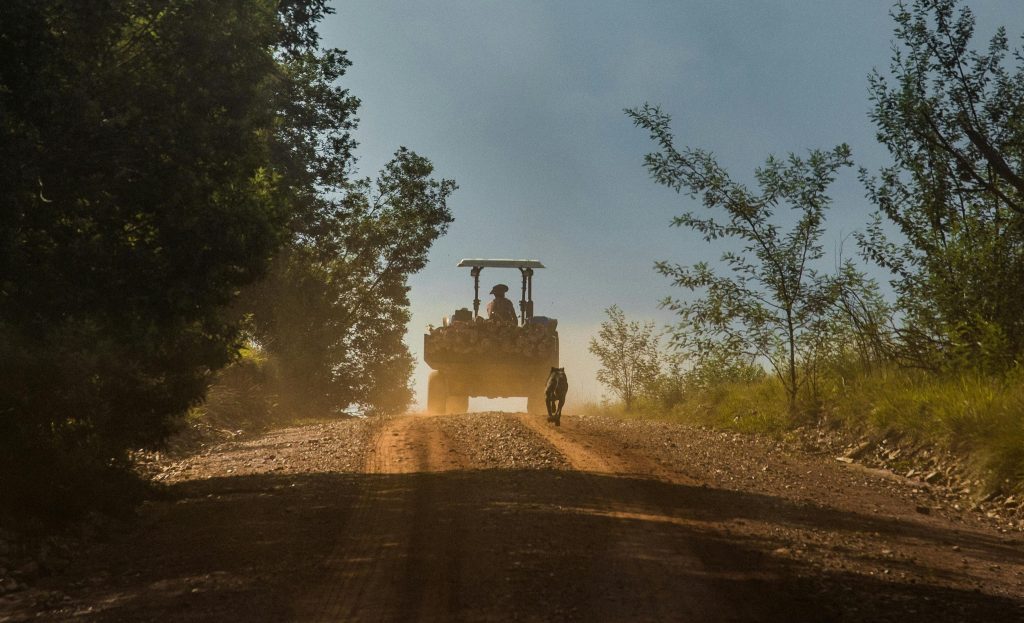
In the city, there’s usually endless traffic to contend with. Out in the sticks, there are fewer motors, but a greater likelihood of farm vehicles to slow you down. Particularly prevalent during harvest time (late summer to early autumn), but a likelihood all year round, always be ready to meet a tractor, combine harvester or baler on your countryside travels.
Most farmers and contractors are considerate. They know they’re holding people up, and will do their best to pull in where possible and let a line of traffic pass by. Equally, they’ve got to get from A to B, and haven’t got time to sit stationary forever. And—while it may seem endless to you—they tend to only be going fairly short distances.
They may wave you ahead of them when there’s no traffic coming. Proceed with all relevant caution and use your own judgement in making the final decision about overtaking them.
Top tips for dealing with farm vehicles:
– Hang back from large vehicles to help you see further around them. It’s also safer, if, say, something on a trailer was to come loose
– Factor slow vehicles into your journey planning. Allow extra time in case you’re held up en route
– Exercise patience; it’s a good opportunity to enjoy the scenery, after all
Unmarked junctions
Most junctions, particularly in the city and suburbs, are marked: they feature signposts and road markings instructing drivers what type of junction is ahead, whether and where they need to stop and who has priority. But these details are missing—very deliberately—from others, known as unmarked junctions. And unmarked junctions are usually found on rural roads.
Nobody has priority at an unmarked junction. But that doesn’t mean there are no rules. It just means that drivers have to use their own common sense, given the situation before them, to make key decisions. This has been shown to encourage a higher degree of caution amongst road users, making unmarked junctions much safer than they first appear.
Here’s how best to deal with them:
– Make sure you look out for upcoming junctions by staying alert for possible gaps in hedges and looking out for other traffic leaving or joining your road
– Slow down if you think you might be approaching an unmarked junction. This will be easier if you’re already driving at an appropriate speed for the road
– Use your indicators, road position and eye contact to let others know which way you plan on going
– Adhere to general driving principles, such as ‘first come, first served’ and allowing those going straight on priority over traffic turning right.
Vulnerable road users
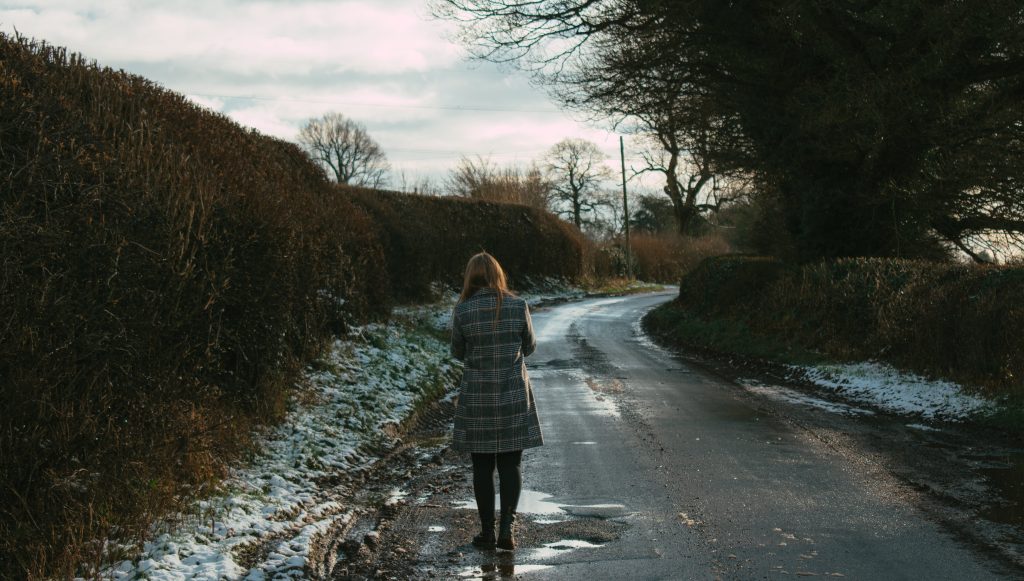
A lack of pavements means an increased likelihood of pedestrians in the road: families out for a stroll; joggers racking up miles; pet owners exercising their pooches.
Now most country folk follow the Highway Code’s rules about walking on the right-hand side—so they can see traffic approaching—moving single file when necessary, and keeping close to the side of the road. But since you’re in the powered metal box, and pedestrians are rather more vulnerable, you have a greater responsibility to adapt your behaviour to help keep them safe. That’s what the hierarchy of road users—part of the 2022 Highway Code updates—is all about.
So, keep alert for people—particularly when your view is restricted by a blind bend or features such as hedges or trees. Slow down, be prepared to stop if you need to, and give pedestrians a wide berth as you go past.
Road condition and weather
Country roads are usually less well maintained than city roads in the UK. They may feature pot holes, hidden dips that are prone to flooding, and uneven cambers. The best ways to combat these challenges are to:
– Drive more slowly than you might on a smooth stretch of tarmac
– Have an awareness of weather conditions (has it rained or been especially windy recently?)
– Scan the road ahead for any signs of poor condition that could damage your car if you hit it at speed
If you come across standing water on the roads, be wary of entering it. It’s difficult to determine how deep it may be, and there may be debris beneath the surface. For the full lowdown on driving through flood water, check out our article on aquaplaning. It explains exactly what to do if you feel yourself losing control of your vehicle when driving through water.
Similarly, if there have been recent high winds, look out for detritus, such as fallen branches, across your path ahead.
Narrow roads and other passing vehicles
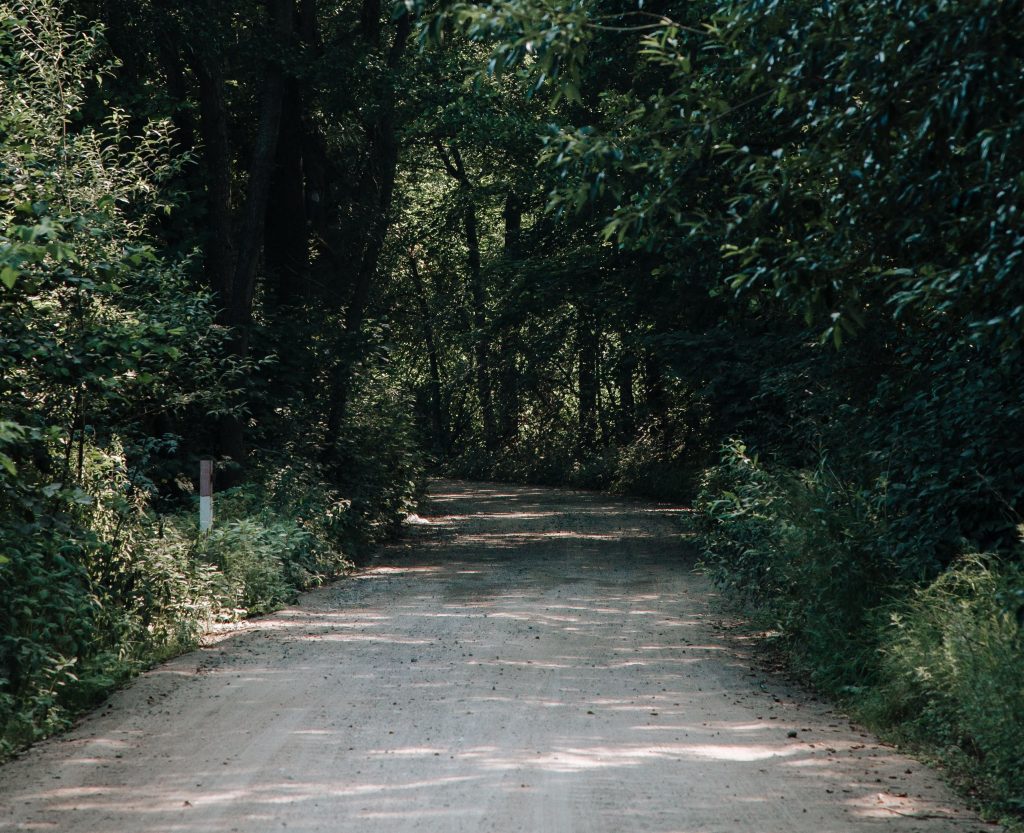
Country roads are generally much narrower than those you’ll find in built-up areas. They often don’t have middle markings, so you need to have good spatial awareness to pass other vehicles safely. This is often a case of looking at an upcoming car, and ‘copy-pasting’ it into the space beside itself, rather than knowing exactly how wide your vehicle is. The less room there is, the more slowly you should drive, and where there’s very little space, use your wing mirrors as you edge forwards to keep yourself clear of obstacles.
Some rural lanes are single-track roads: they are only wide enough for one vehicle. In order to pass another driver, one of you will need to pull into, or opposite, a wider section—known as a passing place. Try to:
– React early to oncoming drivers
– Look out for passing places on either side
– Determine the other driver’s intentions from their speed, road position and other communicative measures (eg. eye contact)
– Be considerate: stop and yield to the other driver where appropriate
– Reverse into a passing place if there’s one closer to you
– Be aware of the terrain, ditches and hedge trimmings if you pull into the side
Blind bends
Blind bends refer to corners you can’t see around. On minor roads, you won’t always get the warning of a road sign, so it’s down to you to keep an eye on the road layout. You can do this by tracking:
– Any road markings, such a cat’s eyes
– Changes in the direction of hedges or trees at the side of the road
You can also chart upcoming twists and turns using a sat nav.
Keep an eye out for skid marks, which could indicate a particularly tight bend, and always expect to come across the unexpected—pedestrians; another vehicle, perhaps one driving very slowly; an animal—around the corner.
Approach a blind bend as you would any other hazard:
– Check your mirror
– Slow down
– Be prepared to stop
– This kind of vigilance should stop you from braking or changing gears on the bend itself, which can lead to a lack of control.
